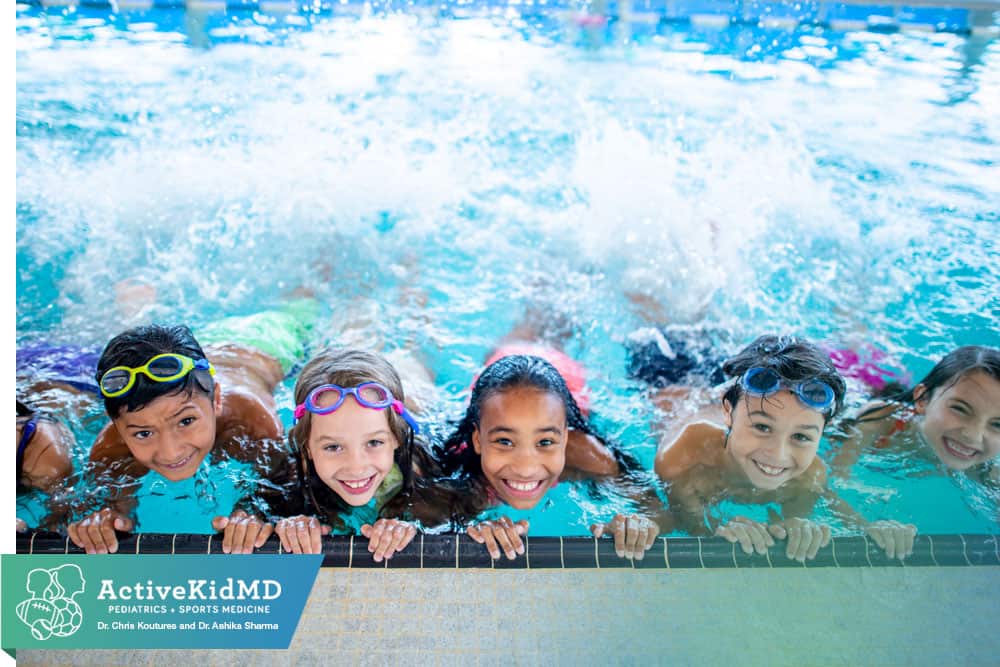Advice by Sport: Swimming
How Can A Swimmer Reduce Shoulder Problems?
- Maintain a sensible training schedule with sufficient rest between training sessions.
- Focus on meticulous stroke technique and vary strokes to reduce overload of one particular stroke on the shoulder joint.
- Factors that can contribute to shoulder injuries in swimmers:
- Improper water entry (favor all fingers entering water first versus thumb-first entry)
- Excessive body rotation with breathing
- Breathing only on one side
- Prolonged pull-through (arm should not pass beltline on pulling phase)
- Develop an individualized rotator cuff and scapula strengthening program. The four rotator cuff muscles keep the humerus (funny bone) in proper location within the shoulder joint- if they get tired, which often happens during repetitive overhead activity such as swimming, shoulder pain can result.
- The scapula is the wing bone on the upper back that provides the foundation for all shoulder motion. Realize that many coaches either do not understand the importance or do not want to take away important pool-time to teach the exercises. However, experience and study has shown that an appropriate strengthening program can supplement swim training and reduce shoulder pain and missed pool time.
- Schedule an appointment or contact a sports medicine professional to develop an appropriate program.
Is There A Way To Help Prevent Swimming-Related Ear Infections?
Swimming-related ear infections are caused by fungal or bacterial infections of the external ear canal, and can cause discharge and extreme pain.
- Using a hairdryer to dry out the canals after swimming can help (do not put it too close to the ear for fear of sound or heat injury)
- Benefit from regular use of protective ear drops. These drops can be made at home (mixture of ½ rubbing alcohol and ½ vinegar) or purchased pre-made at a pharmacy; use 2-3 drops in each ear canal after swimming to help prevent this type of infection
- A true external ear infection requires an office visit and often prescription drops to help fight the infection. Occasionally, pain medication is also required, and the swimmer must stay out of water for 4-5 days until the infection begins to heal.


